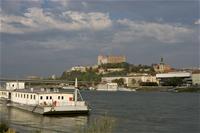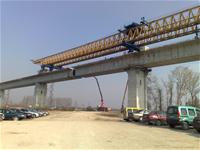The Danube Strategy is on its final leg
Evelyna Topalova, December 13, 2010
 The framework for the development of the Danube Region is a fact. The European Commission presented on December 9th EU's Strategy for the Danube Region which should be implemented once it receives support from the EU member states by mid-2011.
The framework for the development of the Danube Region is a fact. The European Commission presented on December 9th EU's Strategy for the Danube Region which should be implemented once it receives support from the EU member states by mid-2011.
The strategy consists of four main pillars - improvement of transport and energy connectivity between the countries, environment protection, social and economic development and strengthening of the institutional capacity and security. About 115 million people, living along the Danube River, should benefit from the implementation of the strategy.
The Danube River has almost become an internal waterway of the European  Union after the the last 2007 Enlargement. The Danube region includes eight EU member states - Germany, Austria, Hungary, the Czech Republic, the Slovak Republic, Slovenia, Bulgaria and Romania and 6 non-EU countries - Croatia, Serbia, Bosnia and Herzegovina, Montenegro, Ukraine and Moldova. The region is an important crossover point between EU's Cohesion Policy programmes, programmes for countries covered by the European Neighbourhood Policy and measures for applicant and potential applicant countries, as stated in European Parliament's resolution on the strategy from this January.
Union after the the last 2007 Enlargement. The Danube region includes eight EU member states - Germany, Austria, Hungary, the Czech Republic, the Slovak Republic, Slovenia, Bulgaria and Romania and 6 non-EU countries - Croatia, Serbia, Bosnia and Herzegovina, Montenegro, Ukraine and Moldova. The region is an important crossover point between EU's Cohesion Policy programmes, programmes for countries covered by the European Neighbourhood Policy and measures for applicant and potential applicant countries, as stated in European Parliament's resolution on the strategy from this January.
The Commission outlined the challenges the Danube region is facing, which could be overcome through an enhanced regional cooperation. These are climate threats, insufficient transport and energy connections, and shortcomings in security. By dealing with these challenges, the region would be able to develop its economic and tourism potential.
The strategy will not be funded by the EU but the EC recalled that some 100bn euros are available in the current 2007-2013 financial perspectives within the framework of EU's cohesion policy (European Regional Development Fund, Cohesion Fund, European Social Fund).
 Among the specific targets of the strategy are an increase of cargo transport on the river by 20% by 2020 compared to 2010, development of multimodal terminals at Danube river ports, reduction of pollution in the river water to 1960 levels by 2020, guaranteeing broadband Internet access for EU's citizens in the region by 2013.
Among the specific targets of the strategy are an increase of cargo transport on the river by 20% by 2020 compared to 2010, development of multimodal terminals at Danube river ports, reduction of pollution in the river water to 1960 levels by 2020, guaranteeing broadband Internet access for EU's citizens in the region by 2013.
The European Commission approved last year similar strategy for the Baltic Sea Region.
On December 14th the Strategy will be officially presented in all 14 countries in the Danube region, including Bulgaria. The Bulgarian government in the face of the Ministry for Regional Development and Public Works has for a long time prepared its contribution to the document which has a visible place on Ministry's website. The specific projects on which Bulgaria wants to work within the Strategy are many and are related to infrastructure, energy, environment and sustainable development.